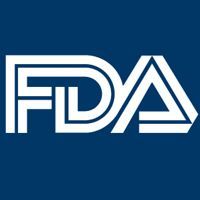Article
Which BPH procedures best reduce need for meds?
Author(s):
Tissue-eliminating procedures outperform tissue-necrosing procedures for reducing the need for medication in patients with benign prostatic enlargement, researchers say.
San Francisco-Tissue-eliminating procedures outperform tissue-necrosing procedures for reducing the need for medication in patients with benign prostatic enlargement (BPE), researchers say.
"There's less advantage to heating the tissue," Bradley Gill, MD, chief urology resident at Cleveland Clinic, told Urology Times. Dr. Gill, working with Daniel Shoskes, MD, and colleagues, presented the findings at the AUA annual meeting in San Francisco.
Medical treatments for BPE don't always work, may be expensive, and cause adverse effects, he said. But few studies have examined the effectiveness of surgery in reducing the need for medication.
Dr. Gill and his colleagues hypothesized that tissue-eliminating procedures would beat tissue-necrosing procedures at allowing patients to avoid urologic medication.
To see if they were right, they analyzed records of BPE procedures from 2001 to 2016 at Cleveland Clinic. The researchers included 2,549 patients who underwent photovaporization, 2,304 who underwent transurethral resection, 165 who underwent either microwave therapy or needle ablation, and 132 who underwent simple prostatectomy.
They defined a medication as discontinued if it was used before surgery but not from 3 months afterward. A medication was defined as resumed if the patient started using it again after discontinuing it. And a medication was defined as initiated if it was used from 3 months after but not before surgery.
Grouped by procedure, the patients' demographics were similar, but there were some statistically significant differences. The most significant was that only 37% of those undergoing microwave or needle ablation (which the authors lumped together in analyses) were using 5-alpha-reductase inhibitors at baseline, compared to 44.4% of those undergoing photovaporization, 51.8% of those undergoing transurethral resection, and 53.8% of those undergoing simple prostatectomy (p<.01).
There were differences in baseline alpha-blocker use as well; this class of drugs was used by 68.2% of the simple prostatectomy group, 79.6% of the transurethral resection group, 79.7% of the photovaporization group, and 83.6% of the microwave/needle ablation group.
In addition, only 15.8% of the simple prostatectomy group had coronary artery disease, compared to 18.8% of the microwave/needle ablation group, 25.7% of the transurethral resection group, and 25.9% of the photovaporization group.
There were less significant differences in baseline anticholinergic drug use, history of smoking, age at surgery, and baseline beta-3 agonist use. Differences in alcohol abuse and type 2 diabetes were not statistically significant.
Next: Simple prostatectomy patients stop 5-ARIsSimple prostatectomy patients stop 5-ARIs
Three months after the procedures, the authors found that 98.6% of simple prostatectomy patients were able to discontinue use of 5-alpha-reductase inhibitors, compared to 91.5% of photovaporization patients, 89.4% of transurethral resection patients, and 80.3% of microwave or needle ablation patients. The differences were statistically significant (p<.01). Differences in initiation of these drugs were not significant.
Similarly, 95.6% of the simple prostatectomy patients, 90.2% of the photovaporization patients, 89.1% of the transurethral resection patients, and 78.3% of the microwave or needle ablation patients stopped using alpha-blockers (p<.01). Differences in initiation were not statistically significant.
Anticholinergics were the only class of drugs for which there was a statistically significant difference in initiation: 8.33% of simple prostatectomy patients started taking them after surgery, compared to 7.89% of photovaporization patients, 5.74% of transurethral resection patients, and 4.76% of microwave or needle ablation patients (p=.041). The differences in discontinuation were not statistically significant for this class of drugs.
Read: Urethral lift efficacious in men with large median lobe
The differences in initiation and discontinuation was not significant for beta-3 agonists.
After 12 months, similar patterns persisted, with statistical significance increasing and some patients beginning to initiate new medications.
The class of drugs initiated the most was alpha-blockers; 51.6% of patients undergoing microwave or needle ablation started on these drugs. No patients started taking these drugs after undergoing simple prostatectomy. But 22.1% of photovaporization patients and 12.8% of transurethral resection patients initiated treatment with these drugs.
Overall, the microwave and needle ablation patients were the most likely to initiate medication after surgery, followed by the photovaporization patients, then the transurethral resection patients. The simple prostatectomy patients were the least likely to start drugs after surgery.
Each of the tissue-eliminating procedures has some advantages, said Dr. Gill.
"We're in a good spot. We have a lot of different options,” he said.
















